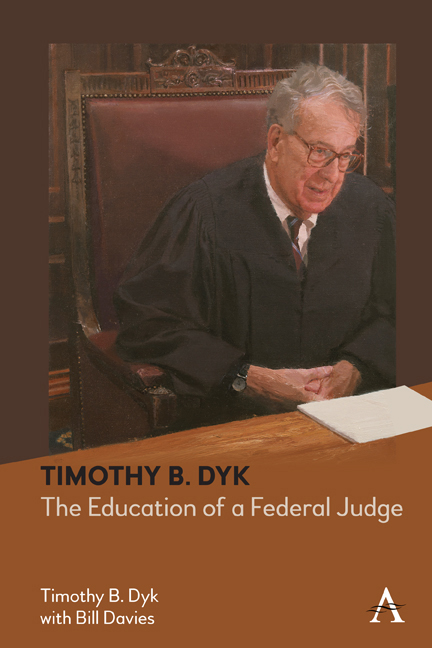Book contents
- Frontmatter
- Dedtication
- Contents
- Foreword
- Acknowledgments
- 1 Introduction
- 2 Family History
- 3 Early Life and Schooling, 1937–61
- 4 Clerking at the Supreme Court, 1961–63
- 5 The Tax Division, 1963–64
- 6 Wilmer Cutler, 1964–90
- 7 Jones Day, 1990–2000
- 8 Reflections on Changes in the Legal Profession
- 9 Becoming a Federal Judge, 1993–2000
- 10 The Confirmation Process, 1998–2000: Selected Diary Entries
- 11 Life as a Federal Judge, 2000–the Present
- 12 Epilogue
- Appendix
- Index
5 - The Tax Division, 1963–64
Published online by Cambridge University Press: 15 September 2022
- Frontmatter
- Dedtication
- Contents
- Foreword
- Acknowledgments
- 1 Introduction
- 2 Family History
- 3 Early Life and Schooling, 1937–61
- 4 Clerking at the Supreme Court, 1961–63
- 5 The Tax Division, 1963–64
- 6 Wilmer Cutler, 1964–90
- 7 Jones Day, 1990–2000
- 8 Reflections on Changes in the Legal Profession
- 9 Becoming a Federal Judge, 1993–2000
- 10 The Confirmation Process, 1998–2000: Selected Diary Entries
- 11 Life as a Federal Judge, 2000–the Present
- 12 Epilogue
- Appendix
- Index
Summary
Special Assistant to Louis Oberdorfer
In the spring of 1963, finishing my second year clerking on the Supreme Court, I turned to the question of what I would do next. The other clerks and I were anxious to get out into the real world—to go to the government or to a firm, which is very much contrary to the attitude of many of the clerks that I see now at our court. Today many look at their clerkships as the high point of their lives. Things are never going to be that good again, and they are not looking forward to private practice, though the academy or government service still appeal.
I assumed that I would finally join the large firm in New York, whose offer I had previously accepted twice and postponed for my clerkships. I again interviewed with the firm, and one of the firm's older and most distinguished partners (by dint of his ancestry and well-publicized public service) was my contact. We will call him Garrett. At the time I was earning almost $10,000 a year as the chief clerk ($1,000 more than the other clerks for no good reason). Garrett offered me $11,000, and I agreed to start in the fall. Two weeks later, Garrett wrote to say that the firm could only pay $9800 (about the same as I was then earning) because that was the set salary for lawyers two years out. He was clearly embarrassed. I declined, my thought being that a deal was a deal. My impression was that the firm was reluctant to depart from the agreed salary scale followed by the New York firms (an agreement broken some years later by Cravath). I do not mean to suggest that it was not a fine firm. It was, and is, and I think things turned out for the best. Interestingly, Justice Stevens apparently earned less in his first year of private practice than he did as a clerk.
This left me without a job but with a new attitude toward my professional life. Until then, my approach toward my professional career was that things would work out, that the world would take care of me, and that very little effort was required by me to shape the future. That now changed.
- Type
- Chapter
- Information
- Timothy B. DykThe Education of a Federal Judge, pp. 67 - 74Publisher: Anthem PressPrint publication year: 2022

